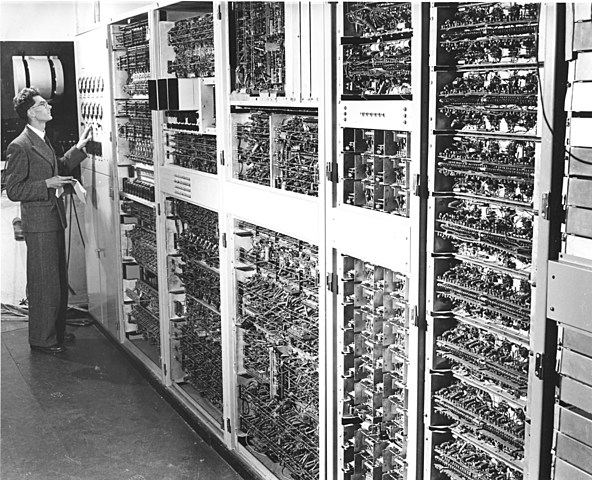The Revolutionary Evolution of Software Engineering
Have you ever wondered how the digital world we live in was created? The technology we use today is a result of years of innovation and hard work, and one of the key drivers behind this transformation is software engineering. In this article, we will explore the fascinating history of software engineering, from its earliest days to the present.
The Beginning: ENIAC and the Birth of Software Engineering
The first computer, called ENIAC (Electronic Numerical Integrator and Computer), was created in 1945. ENIAC was a massive machine, weighing over 27 tons, and it had more than 17,000 vacuum tubes. Despite its size and complexity, ENIAC could only perform simple calculations. It took hours to set up and program the machine, which was done by hand, using switches and wires.
The development of ENIAC paved the way for the birth of software engineering. In the early days of computing, programmers had to create code by hand, which was a time-consuming and error-prone process. As computers became more complex, it became clear that a more structured approach was needed to manage the development of software.
Enter Software Engineering
The term "software engineering" was first used in 1968 by NATO (North Atlantic Treaty Organization) to describe the process of designing, writing, and testing computer software. The aim was to develop a systematic approach to software development, based on principles borrowed from traditional engineering disciplines.
In the 1970s, several programming languages were developed, including Fortran, COBOL, and BASIC, which made it easier to write software. The introduction of high-level programming languages made it possible for non-experts to write code, which led to a surge in software development.
The Rise of Object-Oriented Programming
In the 1980s, a new programming paradigm emerged, called object-oriented programming (OOP). OOP is based on the concept of objects, which are data structures that contain data and methods (functions that operate on that data). OOP makes it possible to write code that is more modular, easier to maintain, and more reusable.
The development of OOP led to the creation of several popular programming languages, including C++, Java, and Python. Today, object-oriented programming is the dominant programming paradigm in use.
The Internet and the World Wide Web
The 1990s saw the birth of the internet and the World Wide Web, which transformed the way we communicate and access information. The internet is a global network of computers, while the World Wide Web is a system of interconnected documents and other resources, linked by hyperlinks and URLs.
The development of the internet and the World Wide Web created new opportunities for software engineering. Web development became a major field, and new programming languages and frameworks were developed to create dynamic and interactive web pages.
Mobile Computing and the Cloud
The rise of smartphones and other mobile devices in the 2000s created a new challenge for software engineers. Mobile apps had to be developed to run on a variety of different devices and platforms, which required new approaches to software development.
The cloud, a network of remote servers hosted on the internet, also emerged as a new platform for software engineering. Cloud computing allows users to access software and services over the internet, without the need to install and run software locally.
Artificial Intelligence and Machine Learning
The latest frontier in software engineering is artificial intelligence (AI) and machine learning (ML). AI refers to the development of machines that can perform tasks that would normally require human intelligence, such as speech recognition, image recognition, and natural language processing.
Machine learning is a subfield of AI that focuses on the development of algorithms that can learn from data, without being explicitly programmed. Machine learning has revolutionized many industries, from healthcare to finance, and it is changing the way we interact with technology.
Today, software engineers are working on developing AI-powered applications that can help us solve complex problems, improve decision-making, and enhance our lives. From virtual assistants like Siri and Alexa to self-driving cars, AI is transforming the way we interact with technology and each other.
Conclusion
The history of software engineering is a story of innovation, creativity, and hard work. From the early days of ENIAC to the rise of AI and machine learning, software engineers have been at the forefront of technological advancement, shaping the world we live in today.
As we look to the future, it is clear that software engineering will continue to play a vital role in shaping our world. Whether it's developing new technologies to solve complex problems or improving our lives through AI-powered applications, software engineers will continue to push the boundaries of what is possible.
So the next time you use a computer or a mobile device, remember the incredible journey that software engineering has taken to get us where we are today. It's a journey that has changed the world, and it's a journey that is far from over.
Labels: Interesting, Technology


0 Comments:
Post a Comment
Subscribe to Post Comments [Atom]
<< Home